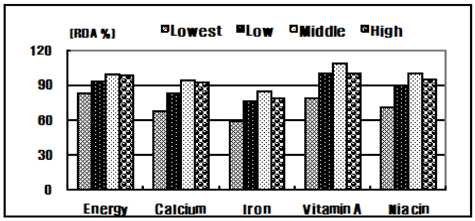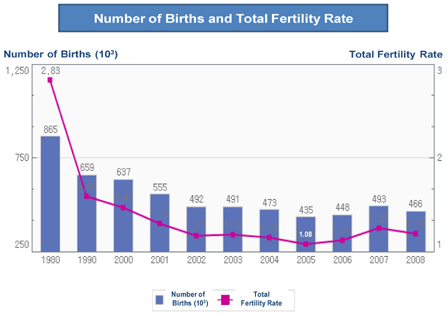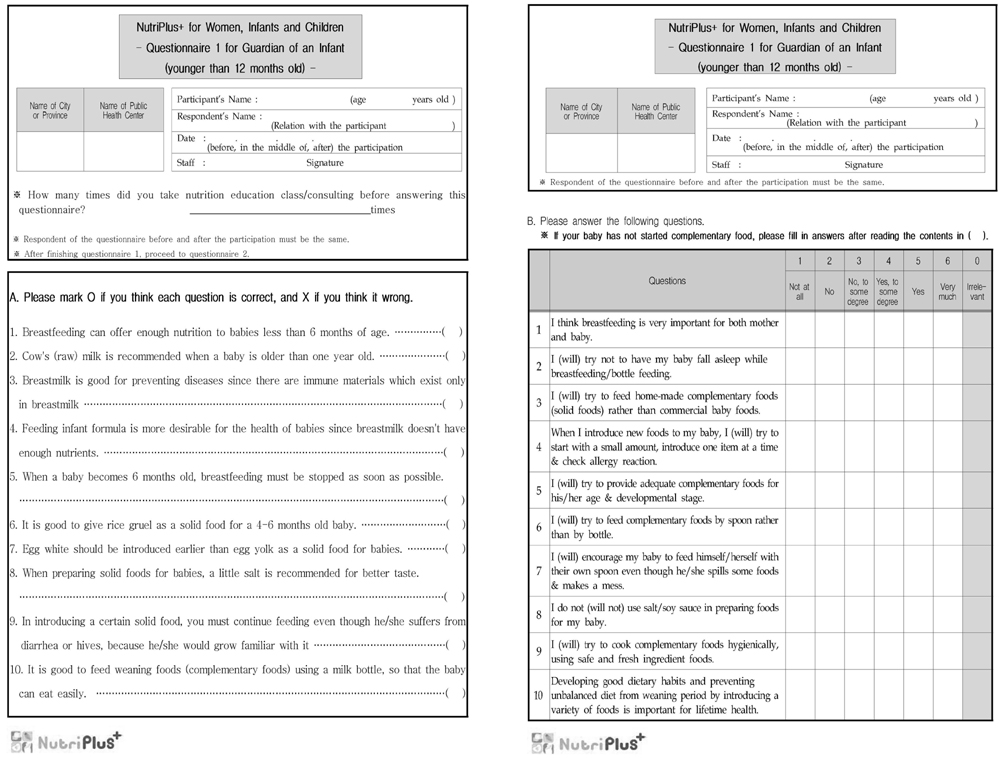Nutr Res Pract.
2009 Sep;3(3):171-179.
Development of supplemental nutrition care program for women, infants and children in Korea: NutriPlus+
- Affiliations
-
- 1Center for Nutrition Policy and Promotion, Korea Health Industry Development Institute, 57-1 Noryangin-dong, Dongjak-gu, Seoul 156-800, Korea. kimci@khidi.or.kr
- 2Department of Food and Nutrition, College of Natural Sciences, Chosun University, 375 Seoseok-dong, Dong-gu, Kwangju, 501-759, Korea.
- 3Center for Research and Business Development, Nongshim Inc. 370 Sindaebang-dong, Dongjak-gu, Seoul 156-709, Korea.
Abstract
- Onto the world-fastest ageing of society, the world-lowest fertility rate prompted a development of various policies and programs for a betterment of the population in Korea. Since the vulnerability of young children of low socio-economic class to malnutrition was clearly shown at the in-depth analysis of the 2001 Korea National Health and Nutrition Examination Survey data, an effort to devise supplemental nutrition care program for pregnant/breastfeeding women, infants and preschool children was initiated. The program was designed to offer nutrition education tailored to fit the needs of the participants and special supplementary foods, using USDA WIC program as a benchmark. Based on the dietary intake of those age groups, target nutrients were selected and their major food sources were searched through nutrient content of foods and dietary pattern analysis. As a result, we developed 6 kinds of food packages using combinations of 11 different food items. The amount of each item in a food package was determined to supplement the intake deficit in target nutrients. Nutrition education in NutriPlus + aims to improve the nutrition knowledge, attitude, and dietary behaviors of the participants, and is provided through group lessons, individual counseling sessions and home visits. Breastfeeding is promoted with top priority in education for the health of both mother and baby. The eligibility guidelines were set for residency, household income, age, pregnancy/breastfeeding and nutritional risk such as anemia, stunting, underweight, and/or inadequate nutrient intake. Income eligibility was defined as household income less than 200 percent of the Korean poverty guidelines. A pilot study to examine the feasibility of program implementation was run in 3 public health centers in 2005 and expanded to 15 and 20 in the following 2 years. The result of 3-year pilot study will be reported separately along with the ultimate nationwide implementation of the NutriPlus + in 2008.
Keyword
MeSH Terms
Figure
Reference
-
1. Nutrient Intakes from Food: Mean Amounts Consumed per Individual, by Family Income (as % of Federal Poverty Threshold) and Age, One Day, 2005-2006. ARS/USDA (United State Department of Agriculture. Agricultural Research Service). 2008. Accessed on 8/3/2009. Available: http://www.ars.usda.gov/ba/bhnrc/fsrg.2. Chung YH. National health determinants and their political implication. Korean Public Health Research. 2007. 33:44–69.3. Cusick SE, Mei Z, Freedman DS, Looker AC, Ogden CL, Gunter E, Cogswell ME. Unexplained decline in the prevalence of anemia among US children and women between 1988-1994 and 1999-2002. Am J Clin Nutr. 2008. 88:1611–1617.
Article4. Devaney B. Very Low Birthweight among Medicaid Newborns in Five States: The Effects of Prenatal WIC Participation. 1992. Alexandria, Virginia: U.S.: Department of Agriculture. USA.5. Devaney B, Schrim A. Infant Mortality among Medicaid Newborns in Five States: The Effects of Prenatal WIC Participation. 1993. Alexandria, Virginia: USA: U.S. Department of Agriculture.6. Nutrition Program Facts. FNS/USDA (United State Department of Agriculture. Food and Nutrition Service). 2009. Accessed on 8/1/2009. http://www.fns.usda.gov/wic/WIC-Fact-Sheet.pdf.7. KHIDI (Korea Health Industry Development Institute). MOHW (Ministry of Health and Welfare). 1998 National Health and Nutrition Survey: Nutrition Survey Report. 1999. Seoul. Republic of Korea: Moonyoung Publishing Co..8. KHIDI (Korea Health Industry Development Institute). MOHW (Ministry of Health and Welfare). 2001 National Health and Nutrition Survey: Nutrition Survey Report. 2002. Seoul. Republic of Korea: Hanhak Publishing Co..9. KHIDI (Korea Health Industry Development Institute). MOHW (Ministry of Health and Welfare). Report on 2002 Seasonal Nutrition Survey. 2003a. Seoul. Republic of Korea: Hanhak Publishing Co..10. KHIDI (Korea Health Industry Development Institute). MOHW (Ministry of Health and Welfare). In-Depth Analysis on 2001 National Health and Nutrition Survey: Nutrition Survey. 2003b. Seoul. Republic of Korea: Hanhak Publishing Co..11. KHIDI (Korea Health Industry Development Institute). MOHW (Ministry of Health and Welfare). Development of dietary guidelines for prevention and management of chronic diseases 2nd year. 2003c. Seoul. Republic of Korea: Hanhak Publishing Co..12. KHIDI (Korea Health Industry Development Institute). KFDA (Korea Food and Drug Administration). Study on Determination of Reference Amounts of Food and Serving Size. 2004. Seoul. Republic of Korea: Hanhak Publishing Co..13. KHIDI (Korea Health Industry Development Institute). Development of National Nutrition Assistance Program for Vulnerable Groups at Nutritional Risk-Benchmarking WIC Program. 2005. Seoul. Republic of Korea: Hanhak Publishing Co..14. KIHASA (Korea Institute for Health and Social Affairs). MOHW (Ministry of Health and Welfare). 2001 National Health and Nutrition Survey: Health Examination. 2002. Seoul. Republic of Korea:15. Kim EK, Lee KH. Assessment of the Intake and availability of dietary iron and nutrition knowledge in pregnant women. Korean Journal of Community Nutrition. 1998. 3:53–61.16. KNS (The Korean Nutrition Society). Recommended Dietary Allowances for Koreans. 2000. 7th ed. Seoul. Republic of Korea: Jungang Publishing Co..17. KNS (The Korean Nutrition Society). Dietary Reference Intakes for Koreans. 2005. Seoul. Republic of Korea: Kookjin Publishing Co..18. KNSO (Korea National Statistical Office). Tentative birth statistics, 2008. 2009. Accessed on 8/2/2009. http://www.index.go.kr/egams/stts/jsp/potal/stts/PO_STTS_IdxMain.jsp?idx_cd=1428.19. KPS (The Korean Pediatric Society). 1998 Growth Charts for the Republic of Korea. 1999. Seoul. Republic of Korea: Kwangmoon Publishing Co..20. Lee HS, Lee Y, Jang YA, Kim CI. Food/nutrition environment indicators in preventing non-communicable chronic diseases. 2005. In : Proceedings of the 3rd Chronic Disease Prevention Symposium; Seoul. Republic of Korea: KHIDI & MOHW, Hanhak Publishing Co..21. Park JA, Yoon JS. A screening tool for identifying high-risk pregnant women of Fe deficiency anemia: Process I. Korean Journal of Community Nutrition. 2001. 6:734–743.22. RRDI (Rural Resources Development Institute). Food Composition Table. 2001. 6th ed. Seoul. Republic of Korea: Sanglok Publishing Co..23. World Health Organization. Indicators and Strategies for Iron Deficiency and Anemia Programmes. Report of the WHO/UNICEF/UNU Consultation. 1994. 6-10 December, 1993; Geneva, Switzerland. Geneva. Switzerland: WHO.24. Yates A. Establishing new principles for nutrient reference values (NRVs) for food labeling purposes. Nutrition Research and Practice. 2007. 2:89–93.
Article25. Yim HS, Kim HA. Effects of maternal anemia on the iron status of the cord blood and pregnancy outcomes. Korean Journal of Community Nutrition. 1998. 3:565–574.26. Yip R, Binkin NJ, Fleshood L, Trowbridge FL. Declining prevalence of anemia among low-income children in the United States. JAMA. 1987. 258:1619–1647.
Article27. Yu KH, Yoon JS. A Cross-Sectional study of nutrient intakes by gestational age and pregnancy outcome (I). The Korean Journal of Nutrition. 1999. 32:877–886.
- Full Text Links
- Actions
-
Cited
- CITED
-
- Close
- Share
- Similar articles
-
- A Study of the Sustainability of NutriPlus Program Effect - in Pohang Area -
- The Effect of NutriPlus Program among 1-5 Year Children in Daejeon Area - The Improvement in Nutritional Status of Children and Nutrition Knowledge and Attitude of Parents -
- Health Education Program Development for Infants, Toddlers and Preschool Children
- Status and Needs for Nutrition Services for Infants and Preschoolers among Public Health Center Workers and Infants Mothers
- Review on Revised Nutrition Guidelines of the Korea National Health Screening Program for Infants and Children




